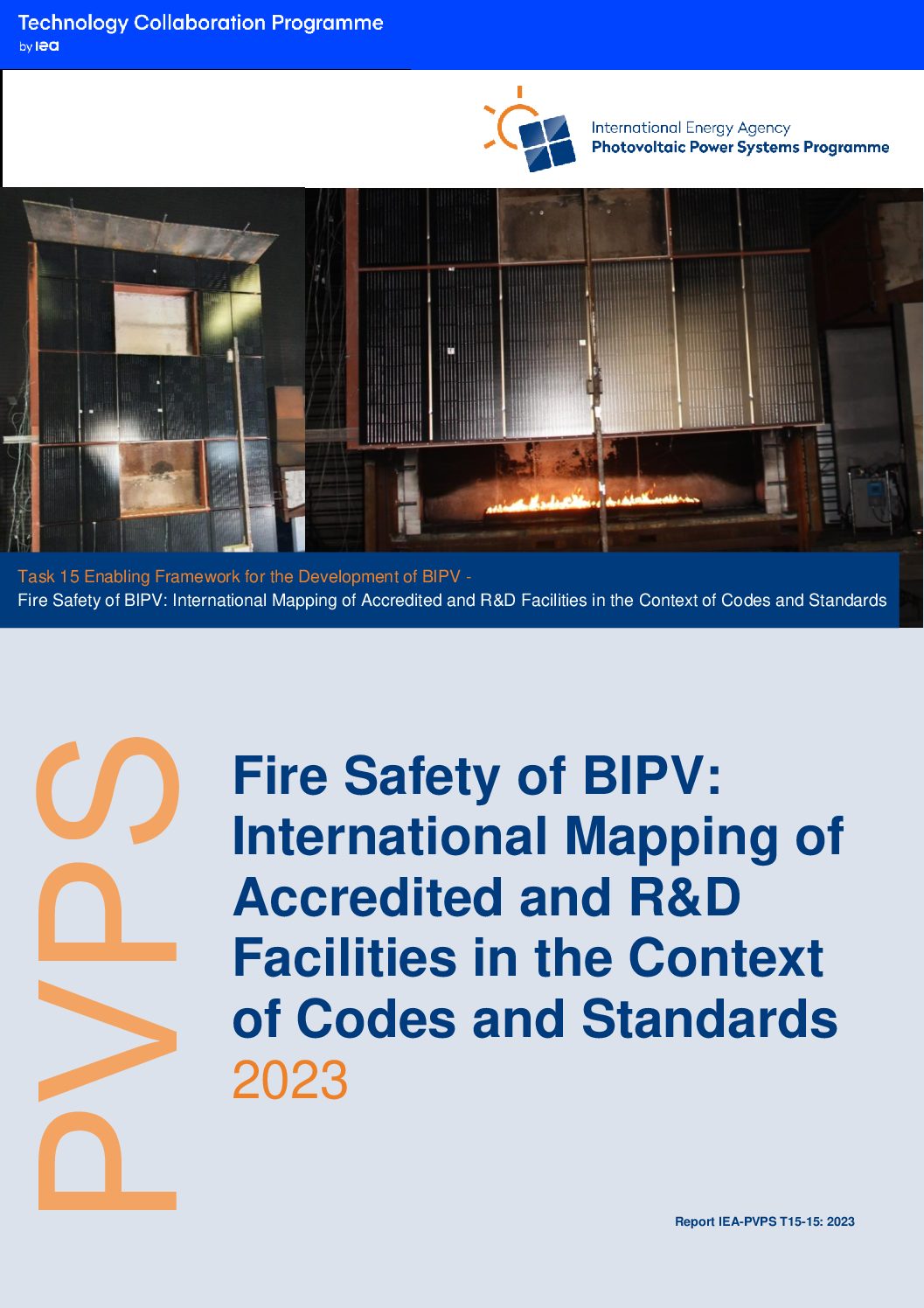This report presents a non-exhaustive overview of more than twenty laboratories around the world where construction products and materials are being tested for fire safety. These laboratories are confirmed to have a common interest in the assessment of BIPV products and systems, even though not all of them may have any experience of it so far. Countries represented in this report are: Australia, Austria, Brazil, Canada, China, France, Germany, Italy, Japan, Korea, New Zealand, Norway, Portugal, Singapore, Spain, Sweden, Switzerland and the United States.
The report furthermore aims to provide brief overviews of internationally applicable fire-safety standards, national building codes and regulations related to fire safety of BIPV modules and systems and to recommend the test methods which could be applied at some accredited and R&D facilities worldwide.
To achieve this, brief descriptions of fire-safety international standards are presented, together with their relationships with national and local building requirements and regulations for BIPV products, followed by a list of international standards and brief scope descriptions relevant to fire safety of BIPV. This is provided as background information but is not intended to be a detailed analysis of all international, European, and American standards as such.
The main content of this report presents fire-safety testing facilities, which are initially summarised in an overview map, including those facilities which are not further elaborated in the sub-sections. Examples of accredited laboratories and R&D facilities for BIPV/BAPV fire safety are presented per country, based on the answers that were received to questionnaires on experience made with accredited and R&D fire-safety test facilities for BIPV modules and systems. One version of the questionnaire on BIPV fire-safety test facilities, that was developed within Activity E.3 of the IEA-PVPS Task 15 and is applicable internationally, is included for documentation purposes. A total of fifteen responses was received to the questionnaire; these are summarised in an Annex for future reference.
Despite increasing deployment of BIPV modules and systems in the built environment, the challenges of harmonising standards at the international level have not yet been overcome. The report concludes by briefly addressing the future development of new testing procedures and opportunities relevant to the fire-related safety of BIPV.
The main authors have identified the following 3 Key Takeaways from the report:
- This report presents an overview of testing laboratories, research teams, standards and regulations in eighteen countries around the world which address the fire safety of construction products.
- The overview presented provides a useful basis for further development of internationally harmonized test methods assessing the fire safety of BIPV products and systems.
- Further international harmonisation of fire-safety standards for construction products is needed and, among other aspects, should address the specific challenges introduced by integrating PV power generation into construction products.
